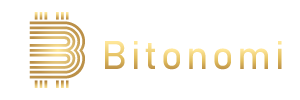As the cryptocurrency ecosystem continues to thrive, now valued at trillions of dollars, the urgency for various blockchain entities to communicate and collaborate has surged. This has led to the emergence of numerous cross-chain interoperability solutions over the past few years, which allow different networks to exchange data, assets, and functionalities without sacrificing their unique identities.
From a financial perspective, the blockchain interoperability market is poised for remarkable growth in the next decade, with projections estimating it will reach a valuation of $3 billion by 2034—an extraordinary increase of 1,400% from its current worth of $200 million in 2023. Leading the charge in this dynamic landscape are several protocols, including Polkadot, Cosmos, Chainlink’s Cross-Chain Interoperability Protocol (CCIP), Ren, ThorChain, and LayerZero, among others.
Polkadot stands out in particular due to its innovative multi-chain network architecture. It utilizes a central Relay Chain that coordinates consensus and facilitates communication among its parachains, while also ensuring shared security across the entire network. In a report released in June 2024, Polkadot provided a detailed treasury overview, revealing that its assets are valued at approximately $245 million.
Cosmos Network is another noteworthy player, utilizing its Inter-Blockchain Communication (IBC) protocol. This protocol harnesses the Tendermint consensus algorithm and Cosmos’s native SDK stack, fostering an ecosystem of independent blockchains that can interact and exchange information seamlessly.
Chainlink’s CCIP is also at the forefront, establishing a universal standard for cross-chain communication and token transfers. By leveraging its decentralized oracle networks, Chainlink ensures secure and reliable data transmission between different blockchains.
**The Emergence of Hybrid Exchanges**
Beyond facilitating basic data exchanges, cross-chain interoperability protocols have significantly transformed the cryptocurrency landscape by giving rise to a new category of hybrid exchanges. These platforms combine the strengths of decentralized exchanges (DEXs) and centralized exchanges (CEXs), creating a more cohesive and efficient trading ecosystem.
Hybrid exchanges represent a revolutionary approach to trading. By employing cross-chain interoperability solutions, these platforms enable trading across various blockchains while preserving the security advantages of decentralized systems alongside the operational efficiency of centralized platforms. This architectural design allows traders to access multiple liquidity pools across different chains around the clock, all while retaining control over their assets through self-custody solutions.
A prime example of this innovation is GRVT. Since its launch in 2022, GRVT has emerged as a trailblazer in the hybrid exchange arena, boasting an impressive throughput of 600,000 transactions per second, made possible by its advanced off-chain order matching and on-chain settlement system. Additionally, the platform incorporates zero-knowledge (ZK) technology, enhancing privacy and security by enabling users to keep their trading data confidential through zkSync’s Validium technology.
For institutional clients, GRVT offers advanced features such as role-based access control, allowing organizations to manage multiple private keys with distinct access permissions for a single sub-account.
**A Rising Demand for Transparent Trading Solutions**
In the wake of the collapse of notable centralized trading platforms like Celsius and FTX, the market is increasingly gravitating toward hybrid exchanges. A recent market survey conducted by Grayscale, which polled 1,759 potential voters, indicated a strong demand for enhanced transparency in cryptocurrency operations. A large majority of respondents expressed support for decentralized finance (DeFi) solutions as viable alternatives to traditional financial systems.
This shift in user preferences underscores a growing recognition that while centralized exchanges have dominated the crypto trading arena, their inherent lack of transparency, vulnerability to single points of failure, and complete centralization of control no longer meet the evolving demands of the market.
Conversely, while decentralized exchanges (DEXs) promote greater transparency, they often face challenges such as limited liquidity, slower transaction speeds, and complex user interfaces that can hinder widespread adoption.
In this context, hybrid exchanges like GRVT, which combine user-friendly interfaces with decentralized security features, are well-positioned to attract users seeking the best of both worlds. Exciting times are on the horizon!




